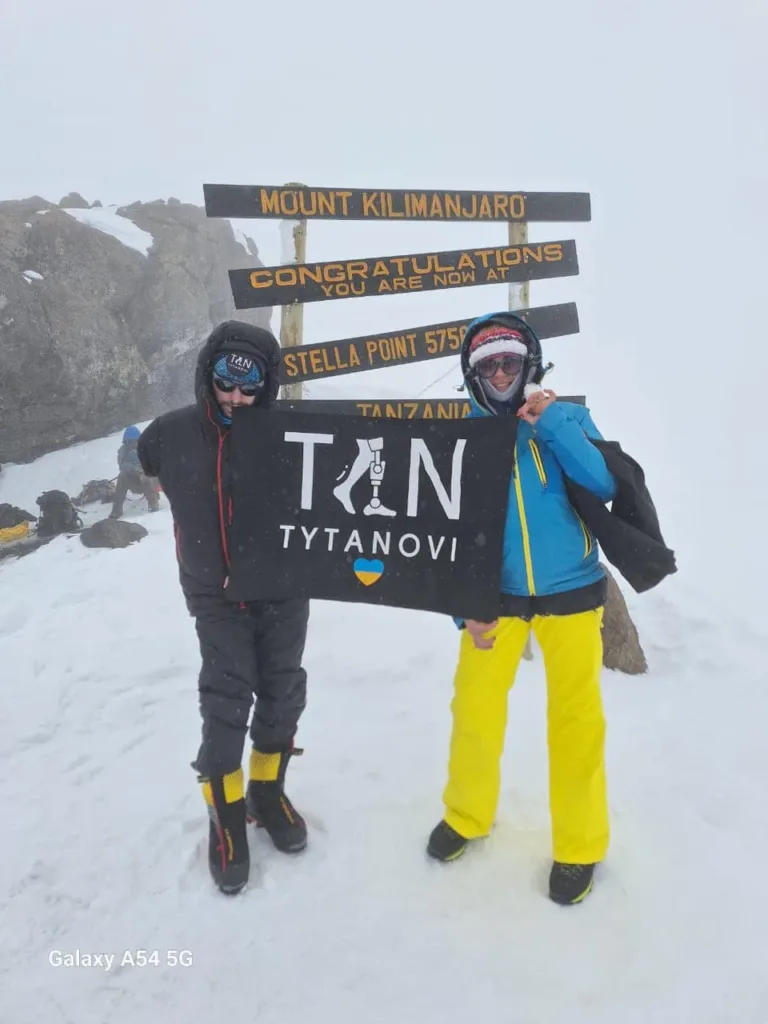Stepan Korobkin, a 25-year-old veteran from Donetsk region who survived two injuries and an arm amputation, achieved a Ukrainian record by climbing to an altitude of 5,756 meters above sea level. He summited Kilimanjaro, the highest peak in Africa.
Read also: The Ministry of Environment explains where the Ukrainian snow has gone
A First-Time Experience
“I had never been abroad or in the mountains. I hadn’t even climbed Hoverla. That’s why I was so curious,” Stepan shared. “When I received the invitation to join the climb, I agreed immediately.”

Stepan’s participation was inspired by climber and volunteer Tatyana Yalovchak. “Last year, I saw a British soldier who climbed Everest despite having double leg amputations. Since 2014, Ukraine has had a significant number of veterans who can serve as an example to the world. Surprisingly, it was challenging to find veterans willing to take on such an adventure. I searched in Unbroken, Superhumans, and various veterans’ communities before meeting Stepan. He’s short, athletic, and a former footballer — I saw great potential in him,” Yalovchak said.
Physical Activity: A Key to Rehabilitation
Vyacheslav Zaporozhets, head and founder of the Centre for Complex Endoprosthetics, Osteo-integration, and Bionics, as well as the Titanium Rehabilitation Centre, emphasized the importance of physical activity in rehabilitation programs: “Physical activity accounts for about 30% of rehabilitation. I know a guy who lost three limbs and swims on par with me. Many veterans ski, play football, or basketball. When you tell a veteran, ‘You’re not a cripple. You can swim, you can climb mountains,’ it inspires them.”
For Stepan, the climb was more than a personal achievement. “I’ve undergone rehabilitation in multiple centers — in Lviv, Dnipro, and Kharkiv. I’ve met many guys who have lost faith in life. They rely on painkillers or abuse substances. Maybe my example will inspire them to change their lives,” Stepan said.
A Grueling Challenge
“Stepan underwent 32 surgeries under general anesthesia,” Tatyana shared. “I didn’t even know about it at first. During the last three days of the climb, he felt unwell. He didn’t eat or sleep properly and continued only through sheer willpower. He showed symptoms of altitude sickness, which affects each person differently and unpredictably.”
“It was an incredible test for my body,” Stepan admitted. “The only comparable experience was in the army, but it was much worse. When I was first weighed in the hospital after my injury, I found out I had lost 20 kilograms in just a month.”


Unprepared but Determined
Non-professionals usually spend 6 to 12 months preparing to climb Kilimanjaro. Preparation includes regular gym workouts, running 10 kilometers every two days, and using specialized equipment like altitude simulation tents. These tents supply oxygen to mimic conditions at various altitudes — 3,000, 4,000, or even 6,000 meters — helping the body adapt to low oxygen levels by increasing blood pressure and circulation.
Stepan, however, climbed Kilimanjaro without any such training, setting a milestone as the first Ukrainian veteran with an amputated arm to conquer this height.
Read also: Healthcare Development Strategy until 2030 approved: key changes and prospects



